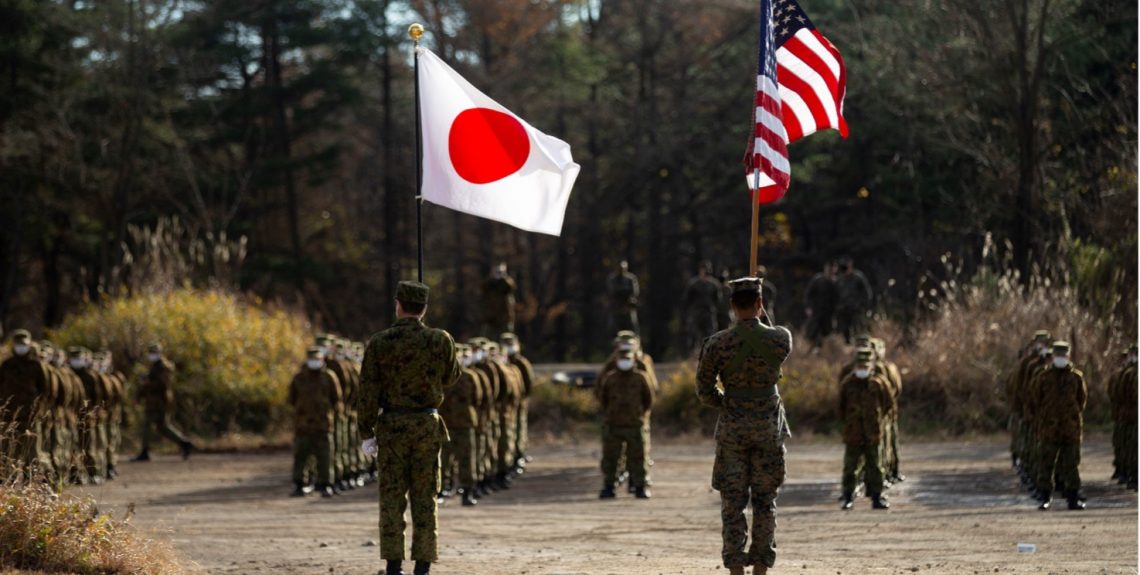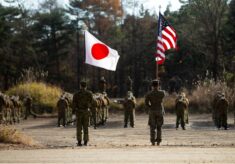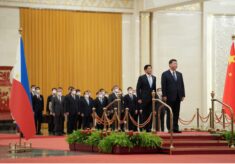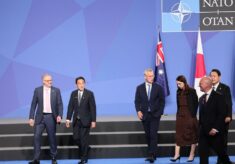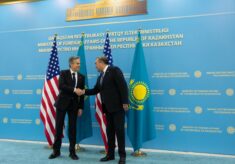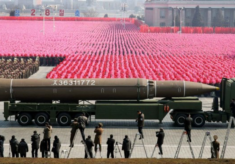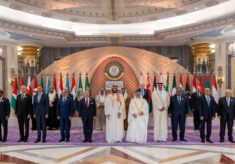Seventy-seven years after the fall of Imperial Japan, then Prime Minister Fumio Kishida delivered a momentous speech before the Diet (Lower House), stating that the country was once again facing a turn of the tide in history (2022). Today, the island-nation is facing primarily the return of China to historical prominence in the form of the PRC, that has altered the entire balance of power of Asia and the world at large.
In 2010, China overtook Japan to become the second largest economy in the world. It was a deeply symbolic event as well, marking the end of Japanese predominance in East Asia and a momentous turn (or return) of the tide. Since then, Japan has been steadily falling behind economically; from third economy in the world, it fell to fourth place in 2023 (giving up its seat to Germany). Today, the Chinese economy dwarfs the Japanese in size.
Former Prime Minister Shinzo Abe (2012-2020) foresaw the dramatic changes that his country would have to face soon. The free and open Indo-Pacific strategy, a doctrine of Abe’s own making, prepared the stage for Japan to switch its overhaul posture in the region.
This is why these PMs engaged into strengthening the military. The process of injecting twice as much of the GDP into the Japanese military industrial complex has already begun under then Prime Minister Kishida. Japan’s Ministry of Defence has submitted a budget request of ¥8,54 trillion ($59,76 billion) for fiscal year 2025. The requested sum marks a 7,5% increase over the current figure of ¥7,95 trillion ($55,6 billion), 10,6% higher than the initial defence budget submission for fiscal year 2024 (¥7,72 trillion).
However, if the geopolitical and geoeconomic story of East Asia remains bipolar, dominated as it is by China and the USA, the diplomatic scenario is indeed tripolar now. In fact, Japan is de facto the third pole of East Asian diplomacy; its network of alliances run deep into southeast Asia as well, where the land of the rising sun has invested heavily in infrastructural projects.
Adding to the volatile, external strategic scenario, one must factor in the visible internal political instability of Japan. The quite complex electoral system is based on plurality vote for single-seat constituencies and proportional (D’Hondt method) for regional constituencies. This has led to the almost uninterrupted domination by the LDP (Liberal Democratic Party) on the national political scene, since 1955, either alone or in coalitions dominated by it, at the cost of frequent parliament dissolutions and changes of government, in addition to the intense factionalism of this leading party and to financial scandals facilitating the fall of cabinets.
To offer a European example, the Italian political system was dominated from 1948 till 1991 by the Christian Democracy party on the basis of a proportional electoral system: legislatures were stable, but governments fell rather often. That said, the sinews of Japanese politics in terms of elite selection and networks are more stable than meets the eye.
After the fall of Kishida’s cabinet due to the ramifications of a funding and religious lobbying scandal, in addition to the rising costs of living and tax increased, the LPD primaries elected Shigeru Ishiba, a relatively more moderate candidate compared to his other eight competitors. Formerly Defence Minister, this PM was seen as a competent leader regarding security, but lost his own electoral gambit on the 27th of October.
Contrary to Ishiba’s wishes, the elections saw the LDP-Komeito (the LDP’s faithful minor party) ruling coalition dropped from a solid majority of 279 seat (233 seats are required to control the Lower House, it being composed of 465 MPs) to a meagre 215, 18 seats away from the bare minimum majority. It was the LDP’s worst performance since 2009, when the party lost the post of prime minister. On the contrary, the CDP (Constitutional Democratic Party, the main opposition party in Japan) rose from 98 seats to 148.
These results leave Japan with no coalition having a clear majority to rule the Diet, the worst conundrum for any parliamentary democracy. A possible solution would be a three-party coalition led by the LPD with 243 seats, just 10 above the Diet 233 required majority limit.
Ishiba, had embraced several controversial proposals, such as forming an Asian version of NATO (roundly opposed by the ASEAN) and a sort of nuclear consultative group with the USA to prepare for nuclear contingencies vis-à-vis Russia and China, similar to the one already existing between Seoul and Washington.
While oppositions do not favour these ideas, even a new government is not likely give top priority to foreign policy, preferring the status quo. An unhappy arrangement not only in relation to an increasingly tense international situation (e.g. the DPKR-Russia agreement on the deployment of a North Korean, possibly in Ukraine), but also to a quite polarised post-election political environment in the USA. A weak Japanese PM and an embattled US President do not necessarily portend stability in the Pacific.
Guido Mocchegiani
Analyst for the Institute for Analysis of International Relation (IARI, Catania), with a focus on East Asia.

